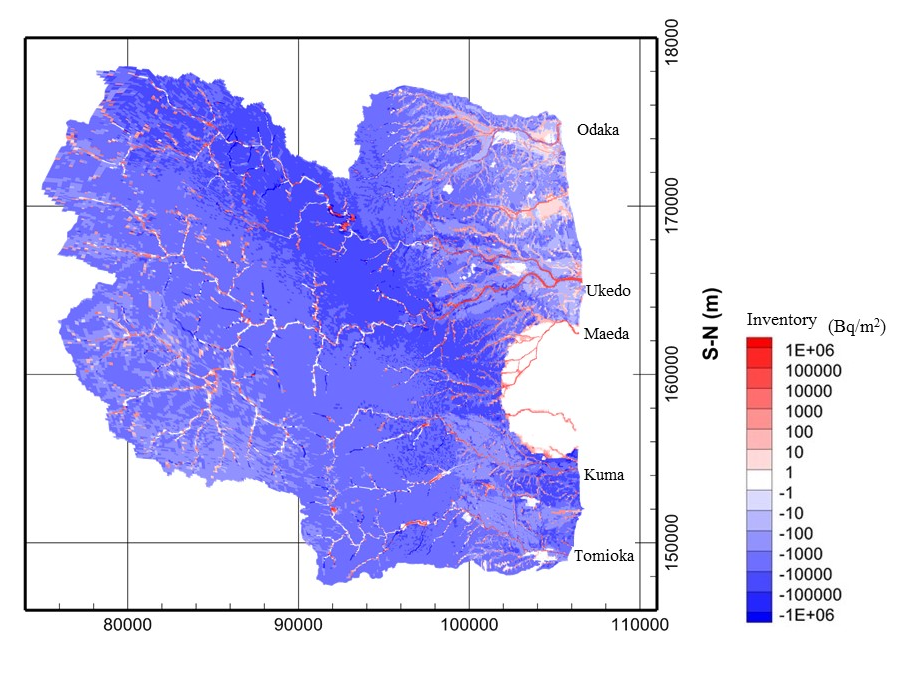Characteristics of radio-cesium transport and discharge between different basins near to the Fukushima Dai-ichi Nuclear Power Plant after heavy rainfall events
Published:

Abstract
This paper describes watershed modeling of catchments surrounding the Fukushima Dai-ichi Nuclear Power Plant to understand radio-cesium redistribution by water flows and sediment transport. We extended our previously developed three-dimensional hydrogeological model of the catchments to calculate the migration of radio-cesium in both sediment-sorbed and dissolved forms. The simulations cover the entirety of 2013, including nine heavy rainfall events, as well as Typhoon Roke in September 2011. Typhoons Man-yi and Wipha were the strongest typhoons in 2013 and had the largest bearing on radio-cesium redistribution. The simulated 137Cs discharge quantities over the nine events in 2013 are in good agreement with field monitoring observations. Deposition mainly occurs on flood plains and points where the river beds broaden in the lower basins, and within dam reservoirs along the rivers. Differences in 137Cs discharge ratios between the five basins are explained by differences in the initial fallout distribution within the basins, the presence of dam reservoirs, and the input supply to watercourses. It is possible to use these simulation results to evaluate future radioactive material distributions in order to support remediation planning.
K. Sakuma, A. Kitamura, A. Malins, H. Kurikami, M. Machida, K. Mori, K. Tada, T. Kobayashi, Y. Tawara & H. Tosaka
Journal of Environmental Radioactivity 169-170, 137-150 (2017)
DOI: 10.1016/j.jenvrad.2016.12.006
PDF: download
